Matt
Are betta fish aggressive? Betta fish fighting and Aggression
Betta fish are among the most popular and visually stunning aquarium inhabitants with their vibrant colors and dramatic fin displays. Yet, their reputation for aggression, particularly in males, has puzzled and concerned many aquarium enthusiasts. This blog post aims to unravel the mysteries behind betta fish aggression, explore the natural behaviors that lead to their infamous disputes, and offer insights into whether they can live peacefully with other fish. We can ensure these beautiful creatures thrive in harmony within our aquariums through understanding and proper care.
Quick Overview
Aggression in betta fish stems from several natural behaviors and environmental triggers:
- Causes of Aggression: Territorial instincts, competition for resources such as food and mates, and individual personality differences.
- Consequences: Stress, injury to themselves or tank mates, and potential impacts on their immune system.
- Solutions: Adequate tank management, thoughtful selection of tank mates, and environmental enrichment.
Why Do Betta Fish Fight?
Betta fish aggression is deeply rooted in their survival strategies. Males often engage in displays of aggression to establish dominance over territories, ensuring access to the best resources and mating opportunities. These displays include flaring their gills, spreading their fins, and, if necessary, physical confrontation. Environmental stressors, such as confined spaces, inadequate hiding spots, and competition for food, can exacerbate these aggressive behaviors. Understanding these triggers is crucial for managing aggression in captive settings.
| Aspect | Details |
|---|---|
| Causes of Aggression | Territorial instincts, Competition for resources (food, mates), Individual personality differences |
| Consequences of Aggression | Stress on betta fish and tank mates, Physical injury or death, Potential impacts on immune system |
| Solutions to Mitigate Aggression | Adequate tank size and conditions, Thoughtful selection of tank mates, Environmental enrichment (hiding spots, plants) |
| Compatibility with Other Bettas | Male bettas: High risk of aggression, not recommended to house together. Female bettas: Can be kept in sororities with caution and monitoring |
| Non-Aggressive Betta Species | Examples: Betta imbellis (Peaceful Betta), Betta mahachaiensis. Require specific care and tank conditions to thrive |
| Suitable Tank Mates | Non-aggressive, small species that don’t resemble bettas. Examples: Neon tetras, harlequin rasboras, certain shrimp and snails |
| Products for Wild Bettas | Specialized foods, gentle filtration systems, live plants, driftwood, caves. Aimed at creating a naturalistic environment to reduce stress and aggression |
How do betta fish kill each other
- Flaring: Bettas will flare their gills to appear larger and more intimidating. This is often the first sign of aggression and serves as a warning.
- Fin Spreading: Similar to flaring, bettas spread their fins to maximize their apparent size.
- Charging and Nipping: If initial displays do not deter the opponent, bettas may engage in more physical confrontations including charging at each other and nipping. They target the fins and body of their adversary.
Can You Keep Betta Fish Together?
Housing male bettas together is generally not advised due to their strong territorial instincts. However, female bettas can coexist in what’s known as a “sorority tank,” though this requires careful planning. The tank should be spacious, with plenty of hiding spots to prevent stress and aggression. Even in sorority settings, it’s essential to monitor for signs of aggression and be prepared to separate individuals if necessary.
Betta Species That Aren’t Aggressive (Peaceful Betta Fish)
Not all betta species display the aggressive tendencies seen in Betta splendens. Wild species like Betta imbellis, known as the Peaceful Betta, can be more tolerant of conspecifics and suitable for community tanks. To thrive in captivity, these species have specific care requirements, such as softer, acidic water and a diet rich in live foods. Creating a tank environment that mimics their natural habitat is key to reducing stress and aggression.
Can Betta Fish Live with Other Fish?
The goal of considering tank mates for betta fish is to avoid triggering their aggressive tendencies. Suitable companions are typically small, non-aggressive species that do not resemble bettas in coloration or fin structure. A spacious tank with ample hiding spots and visual barriers can help minimize stress and prevent aggression. Examples of compatible tank mates include neon tetras, harlequin rasboras, and certain shrimp and snail species. Careful observation and adjustment are crucial when introducing bettas to a community tank.
Products You Need for Wild Bettas
Caring for wild betta species requires attention to their natural habitat and behaviors. Essential products include:
- Specialized Foods: Opt for high-quality, varied diets that mimic their natural food sources.
- Filtration Systems: Gentle, low-flow filters that maintain water quality without creating strong currents.
- Tank Decorations: Live plants, driftwood, and caves provide hiding spots and reduce stress.
- These items help create a more naturalistic and stress-free environment, crucial for the well-being of wild bettas and for reducing aggressive behaviors.
Conclusion
Betta fish can be challenging and a joy to keep in home aquariums. Their aggressive behavior, while natural, can be managed through proper care, understanding, and environmental enrichment. Betta fish can live harmoniously with other inhabitants by providing spacious tanks, compatible tank mates, and a habitat that mirrors their natural environment. This guide is a starting point for creating a peaceful aquarium, encouraging enthusiasts to share their experiences and continue learning about these fascinating creatures.
Betta Channoides (Snakehead Betta)
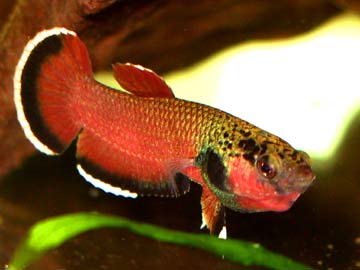
Photo by Kei Sasaki
Dive into the world of Betta channoides, a captivating species that brings a piece of the wild into your aquarium. This post is designed to better understand their needs, behavior, and how to mimic their natural environment for a thriving life in captivity.
Channoides Betta Quick Overview
Click here to see my favorite, simplified, betta fish care guide…
Betta channoides, often hailed as the “Snakehead betta” due to its distinctively large mouth and head shape reminiscent of the Channa species, is a small yet vibrant addition to the freshwater aquarium. Originating from the blackwater streams of Borneo’s eastern province, specifically the Mahakam river basin, this species is prized for its bright orange coloration in males, peaceful temperament, and intriguing mouthbrooding breeding behavior.
Betta channoides in the Wild
These fish inhabit shallow pools and streams with very low pH levels, often between 3-4, caused by decaying leaf litter that tints the water a tea-like brown. The low vegetation but abundant organic material like branches and leaves offers cover, defining these habitats as blackwater environments.
Appearance
Reaching up to 2 inches, males are distinguished by their intense orange body and black fins with white borders. The significant mouth size, developed for mouthbrooding, alongside their dorsal fin’s red-orange color with a white border, sets them apart from similar species like Betta albimarginata, which has darker, often fully black dorsal fins.
The Channoides betta earned the nickname “snakehead betta” due to its physical resemblance to fishes in the Channa genus, commonly known as snakeheads. Here’s why:
- Head Shape: Both the Channoides betta and snakehead fishes share a similar elongated, slightly flattened head profile.
- Mouth Size: The Channoides betta has a noticeably larger mouth than many other betta species. This trait is also common in snakehead fish.
Temperament
Betta channoides stands out for its peaceful nature, allowing for cohabitation in pairs or small groups without severe aggression. However, establishing territories is crucial in a community tank, especially with multiple males, to minimize conflict. Unlike Betta splendens, they do not typically flare or attack on sight, but males may defend territories or compete for dominance.
Betta channoides Care
Tank Setup:
- Size: A minimum of 10 gallons for a pair, with 15 gallons suitable for a trio and 20 gallons for a small group.
- Planting: While their natural habitat isn’t heavily planted, in captivity, plants like Java moss, fern, frogbit, and Anubias provide necessary cover and mimic their environment. Indian almond leaves are essential for simulating the leaf litter floor, offering shelter and releasing beneficial tannins.
- Water Flow: A gentle water flow mimics their habitat’s currents, beneficial for mouthbrooders. However, ensure the flow is not too strong to avoid exhausting the fish. While filters aid in water cleanliness, they’re not mandatory with diligent water changes.
Tank Mates:
Suitable for peaceful and small species that won’t compete aggressively for food or territory. Shrimp, Corydoras, Kuhli loaches, and Norman’s Lampeye Killis are excellent companions in appropriately sized and well-structured tanks.
Food:
Emphasize a carnivorous diet with a variety of live, frozen, and high-quality dried foods to cater to their predatory nature. Diversity in diet ensures they receive all necessary nutrients.
Water Parameters:
Adaptable to a range of conditions but thrives in soft, acidic water reminiscent of their blackwater origins. Regular water changes and the addition of Indian almond leaves help maintain the desired water chemistry.
Breeding Betta Channoides
Breeding these paternal mouthbrooders involves creating a stress-free environment with softened, acidic water and higher temperatures for spawning. Small batches of 5-12 large eggs are typical, with males brooding for 2-3 weeks. Post-spawn care includes minimizing stress for the male and ensuring the fry have appropriate food and shelter to grow.
Spawning Process:
Pairs should form naturally within a group or be selected for a breeding setup. Spawning triggers include comfortable conditions, pH adjustments, and temperature increases.
Raising Fry:
After males release independent fry, removing parents prevents accidental predation. Early feeding should include baby brine shrimp, transitioning to chopped live or frozen foods as they grow. Tannin-rich environments from added leaves boost fry resilience and survival rates.
Products You Need for Wild Bettas
A curated selection of products will be listed to support the specific needs of Betta channoides, from adjustable heaters and gentle filters to specialized foods and Indian almond leaves. These tools are essential for recreating their natural conditions and promoting their well-being in captivity.
Conclusion
Betta channoides offers a unique glimpse into the diverse world of bettas, with their distinctive breeding behavior, peaceful cohabitation potential, and specific care requirements. By closely replicating their natural habitat and understanding their needs, enthusiasts can enjoy the rewarding experience of keeping these fascinating fish. Share your journey and learn from the community as we explore the beauty and complexity of Betta channoides together.
Betta Fish Eggs 101: Size, Appearance, Hatching Time & More
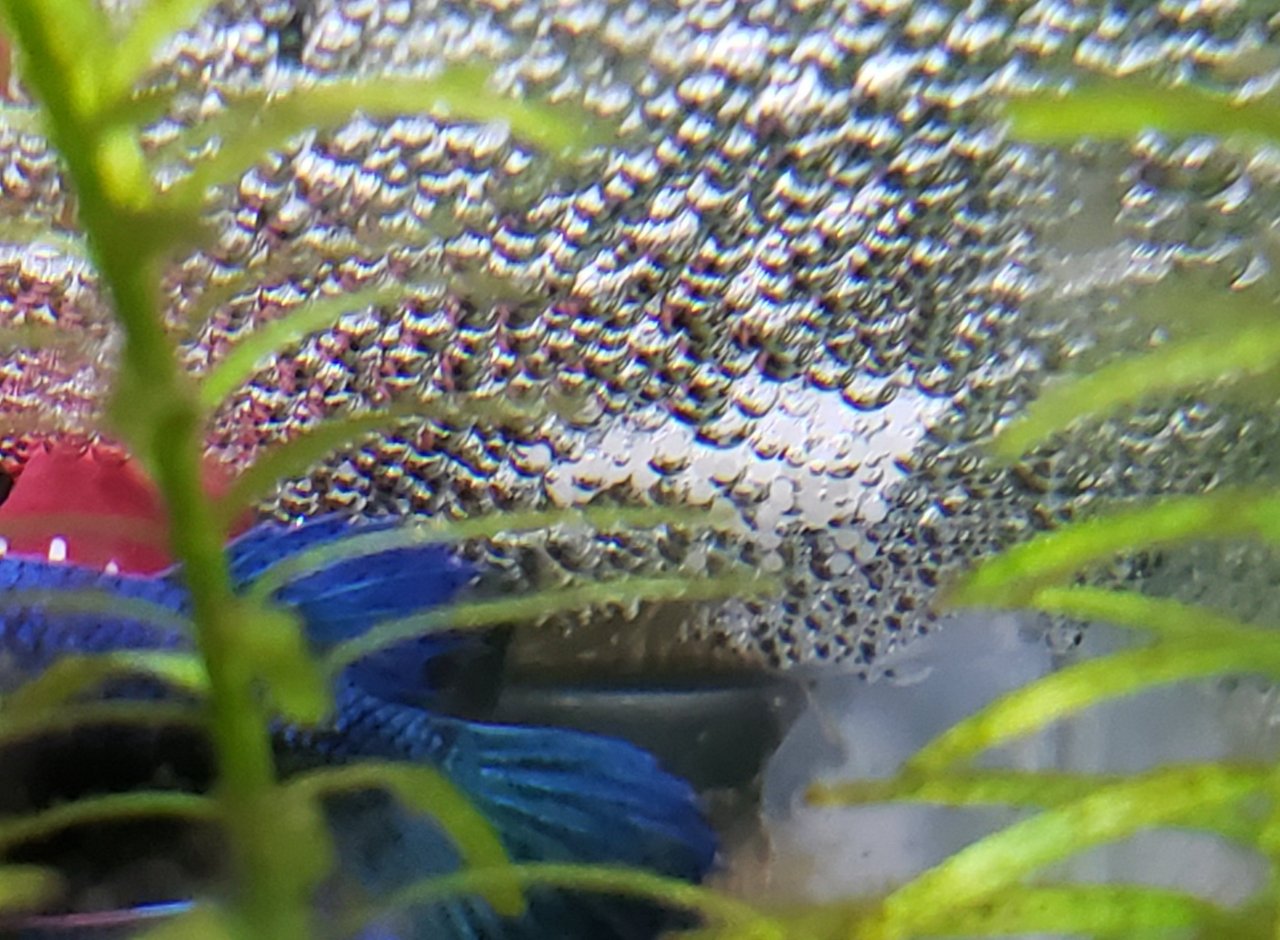
Bubble nest made by males to protect betta eggs. Credit: myaquariumclub.com
Betta Fish Eggs Quick Overview
Click here if you have eggs in your tank, your baby betta fry will thank you…
Betta fish, renowned for their vibrant colors and flowing fins, have unique breeding behaviors that captivate aquarists. Understanding their eggs is a crucial step in the rewarding journey of breeding these stunning fish. From selecting a healthy pair to raising the fry, prepare yourself for an exciting adventure!
What Do Betta Fish Eggs Look Like?
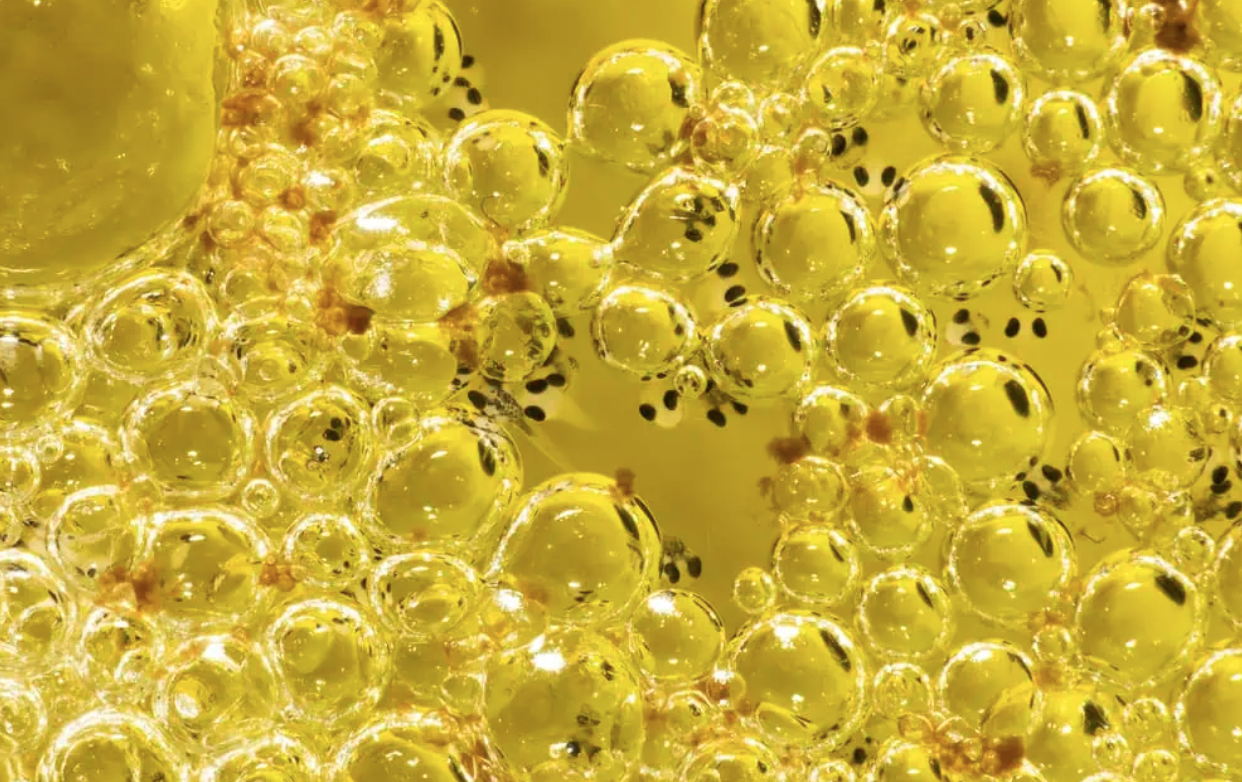
Betta eggs & tiny fry developing. photo credit: bettafishbay.com
- Tiny Orbs: Betta fish eggs resemble miniature pearls, initially about 1mm in size and white in color. They have a slightly oval, rather than perfectly round, shape.
- Signs of Life As the embryo develops, you’ll notice two distinctive black dots – the baby betta’s eyes! Soon, you might even see the outline of the entire embryo inside.
- Mouthbrooder Differences: Eggs of mouthbrooding betta species are larger (2-3mm) and take longer to hatch.
Betta Fish Eggs Hatching Time
Click here for my favorite guide on raising fry
Betta fish eggs develop remarkably quickly, but several factors influence hatching time:
- Tropical Warmth: Bettas thrive in warm water – ideally 78-82°F. Cooler temperatures slow development, while a warmer range around 79-82 °F encourages faster growth and a higher survival rate.
- Cleanliness is Crucial: High water quality is essential. Dirty water can lead to harmful chemicals or excess waste that damages eggs and fry. Do a water change before spawning and add catappa leaves or a sponge filter for added protection.
- Species Matters: Bubble-nesting bettas have fast-developing eggs, often hatching in 24-72 hours. Mouthbrooders, like Betta macrostoma, can take upwards of a month!
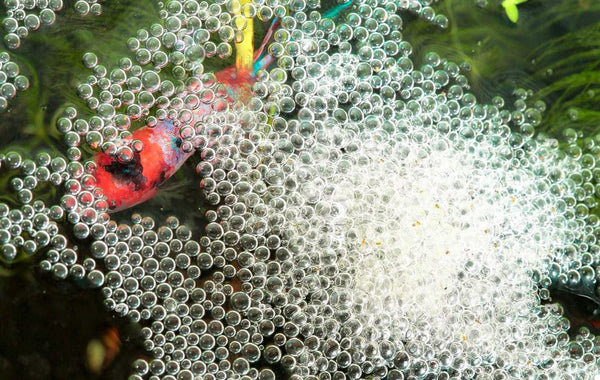
Credit: Buce Plant
How to Know if Betta Fish Eggs Are Fertilized
From struggles to success: a betta breeder shares their experience to success
- Look for Growth: Fertile eggs show signs of development, such as those telltale black dots and a visible embryo. Close to hatching, you may even see a tiny fish inside with a white yolk sac.
- Unfertilized Eggs: These remain white or become fuzzy with fungus – a sign they won’t hatch. The male betta will typically eat unfertilized or damaged eggs.
How Many Eggs Do Betta Fish Lay?
Betta fish lay anywhere from 100 and up to 500 eggs in a single mating session, however the average is generally about 250+.
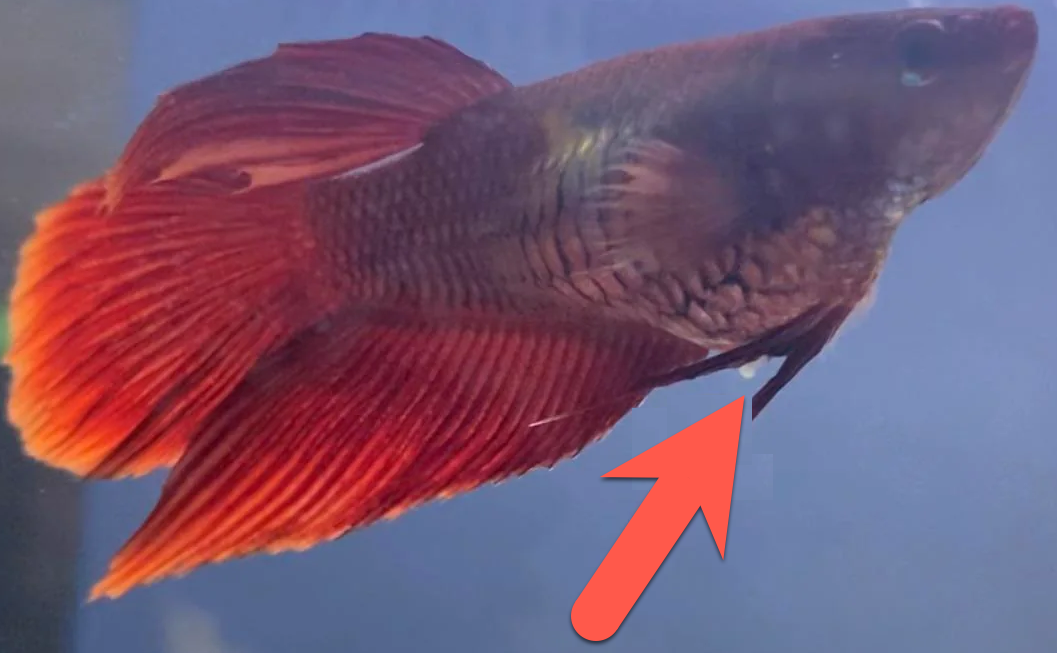
Egg spot shown here – credit: reddit user Sea-Explanation4816
Prepare to be amazed, female betas have an oviposter tube where eggs come from which is called an “egg spot”! Several factors influence the number of eggs a female betta produces:
- Size and Age: Larger, mature females tend to lay more eggs. A young betta (2-3 months old) may be sexually mature, but waiting until she’s full-grown (around 8 months to a year) yields the healthiest, biggest spawns.
- Conditioning: Properly conditioning the pair with a high-protein diet boosts egg production. Spawns can range from 30 to an astonishing 500 eggs, though smaller batches are common for less-experienced pairs or mouthbrooders (who typically lay 10-20 eggs).
Betta Fish Spawning: An Intriguing Dance
- Bubble Nest Builders: The male betta creates an elaborate nest of bubbles where the eggs will be protected (it usually takes a few hours to build). During spawning, the male and female engage in a captivating courtship, culminating in the release and fertilization of the eggs. You do not want to remove the bubble nest!
- Mouthbrooding Wonders: Certain betta species are mouthbrooders – the male (or less commonly, the female) carries the eggs in their mouth until hatching. This adaptation evolved in environments less suitable for bubble nests.
Caring for Betta Eggs
- Hygiene is Key: Carefully remove any unfertilized eggs to prevent fungus from harming healthy ones. Experienced breeders may use gentle water siphoning or natural antifungals like methylene blue or Indian almond leaves.
Fry Development and Care
- Minuscule Meals: Newborn betta fry are incredibly tiny and need specialized live food called infusoria for the first few days.
- Growth Stages: Within a week, fry becomes free-swimming and can eat slightly larger foods like baby brine shrimp. Soon, you’ll see their vibrant colors emerge!
Betta Fish Eggs vs. Other Fish Eggs
- Bubble Nest Architects: Most aquarium fish don’t create bubble nests. If you see eggs in a nest, it’s your bettas!
- Dedicated Mouthbrooders: Carrying eggs in the mouth is also exceptional behavior.
Betta Breeding in the Wild
Click here for my favorite resource on keeping a betta happy and thriving
Betta fish in their natural habitats, the lush rice paddies, and shallow streams of Southeast Asia face different challenges than their aquarium-kept counterparts. Their breeding habits have adapted to these environments in fascinating ways:
- Temporary Homes: Wild bettas often breed in temporary puddles or small pockets of water, where their eggs are less likely to be found by predators.
- Beyond the Bubble Nest: Not all betta species build bubble nests. Some scatter their eggs among vegetation for dispersal.
- Mouthbrooding Adaptations: Mouthbrooding bettas often inhabit streams with a slight current, making bubble nests impractical. Their larger jaws evolved to protect their developing young.
Final Thoughts
Breeding betta fish and raising their eggs is a captivating and educational experience. From the elaborate bubble nests to the dedication of mouthbrooding parents, bettas never cease to amaze! Whether you’re breeding for the first time or a seasoned expert, the process demands patience and a commitment to providing optimal conditions. With the right preparation and care, witnessing tiny betta eggs transform into a vibrant school of fry is an unforgettable reward! If you’d like to see a full betta fish care guide, please see ours here.
Betta imbellis (The peaceful Betta) – Full Care Guide
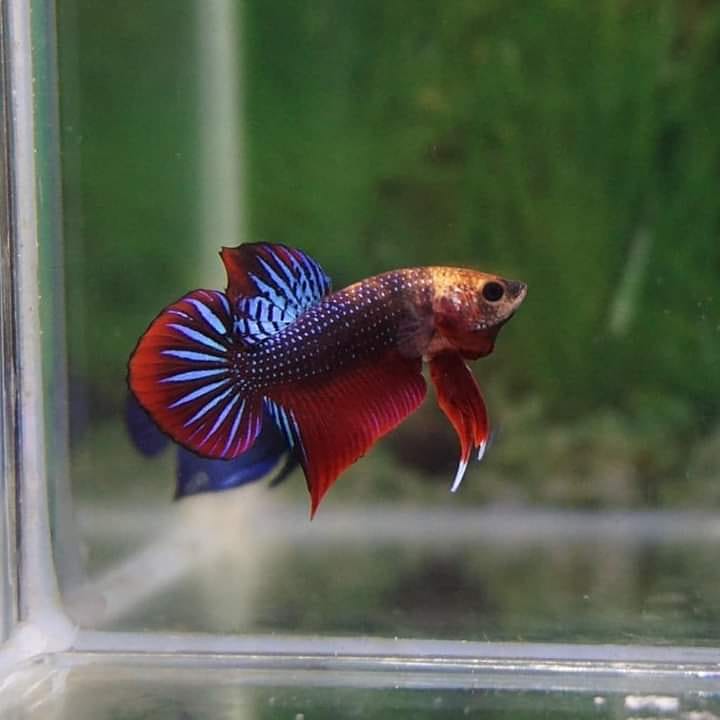
credit: reddit.com
Betta imbellis, known for its serene nature and striking colors, stands apart in the aquatic world. Popularly referred to as the Peaceful Betta or Crescent Betta, it captivates wild betta enthusiasts with its vibrant emerald-green body contrasted by vivid red accents. Unlike its more aggressive relatives, Betta imbellis offers a tranquil presence in the aquarium, making it a prized addition for hobbyists.
- Tank Size: For a single Betta imbellis, a minimum of 4 gallons is necessary. However, to house a pair comfortably and ensure harmony, a 15-gallon tank is advisable.
- Environment: Mimicking their natural habitat, the aquarium should be richly planted with soft substrates and features such as driftwood and leaf litter for hiding. Plants like Java fern and Anubias provide both cover and beauty.
- Water Conditions: Maintain a pH range of 6.0 to 7.5 and temperature between 75-82°F (24-28°C). Soft, acidic water conditions are ideal.
- Filtration and Lighting: Use a gentle filtration system to keep the water clean without creating stressful currents. Subdued lighting helps simulate their native environment.
- Diet: A diet rich in proteins, including live or frozen foods like bloodworms and brine shrimp, will keep your Betta imbellis thriving.
Imbellis Appearance
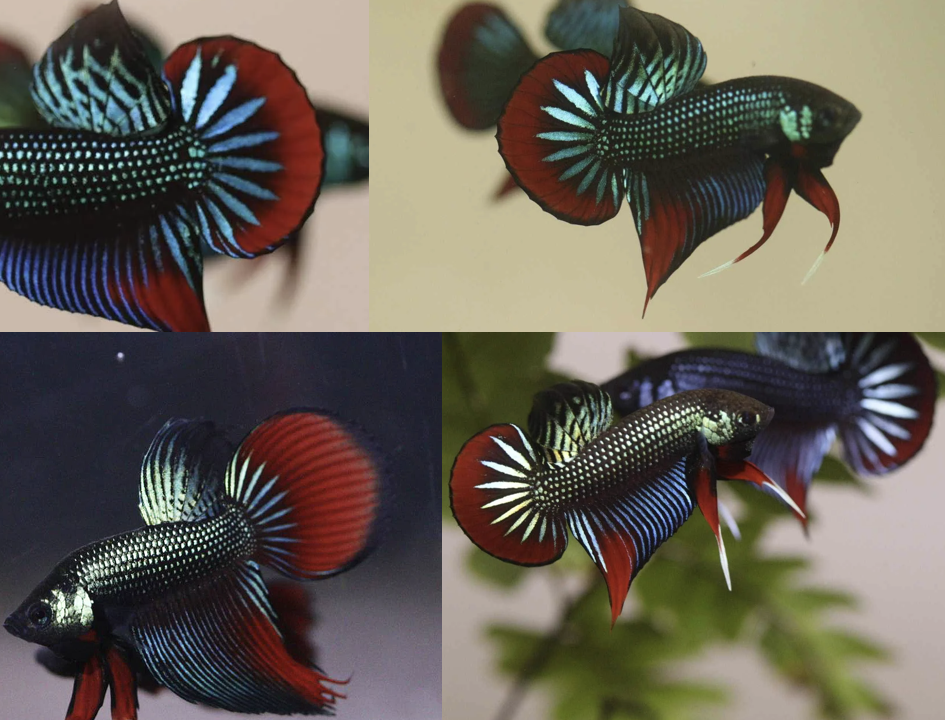
Photos from Franks Bettas
Betta imbellis showcases a captivating blend of colors, primarily characterized by an emerald-green body with subtle hints of blue. This species is less flamboyantly bred than the Betta splendens, leading to a more natural, subdued elegance that is nonetheless striking in an aquarium setting.
- Tail and Eclipse
The tail, or caudal fin, of the Betta imbellis is known for its round, or crescent shape, often presenting a beautiful semi-circle that has earned it the nickname “Crescent Betta.” This tail may feature an eclipse-like pattern, particularly visible in males, where a vivid red crescent or partial eclipse shape adorns the tail, adding to their visual allure.
- Scaling
The scales of Betta imbellis can vary in coloration from blue to emerald green, often shimmering under aquarium lights. The intensity of color can change based on the lighting conditions, with scales appearing more vivid in certain lights. This color variation, along with the dense scaling, contributes to the fish’s overall beauty.
- Size
Betta imbellis is relatively small compared to other betta species, typically reaching about 2 to 2.5 inches (5 to 6.4 cm) in length. This size makes them suitable for smaller tanks, although they thrive best with ample space to explore.
- Ventrals
The ventral fins of Betta imbellis are noteworthy for their length and coloration. They often display a rich red color with black edging, which contrasts strikingly against their green body. These fins are not just for show; they play a significant role in the fish’s display behaviors, both in terms of aggression and courtship.
Betta imbellis in the wild
Historically, bettas were captured by individuals for the purpose of engaging them in combat. Within this context, Imbellis is not as sought after for fighting compared to the Betta splendens, which has seen selective breeding for aggression, resulting in various fighting strains like the Thai fighter fish and other domestic variations.
Over the years, Betta imbellis has diverged significantly from its wild origins through selective breeding, leading to the development of numerous strains that exhibit a wide range of colors and patterns, moving away from their original utilitarian purpose towards more ornamental traits.
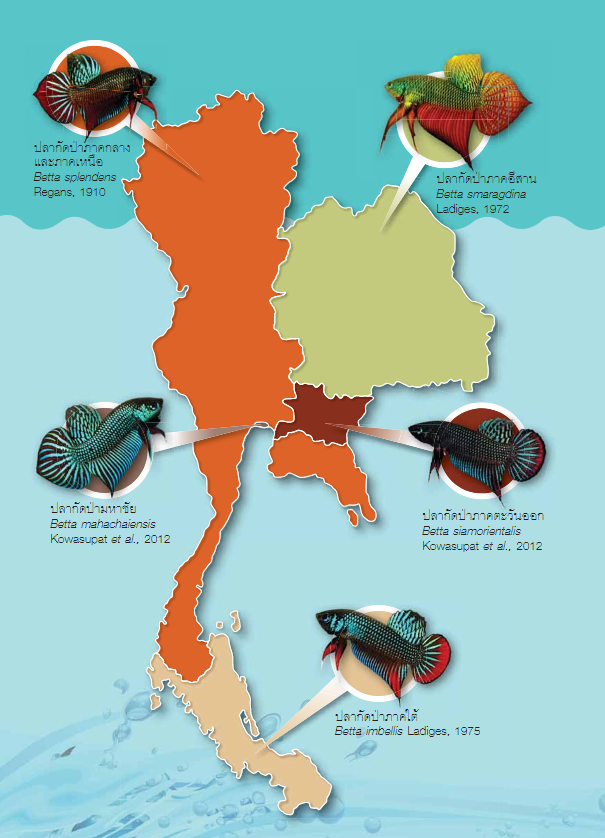

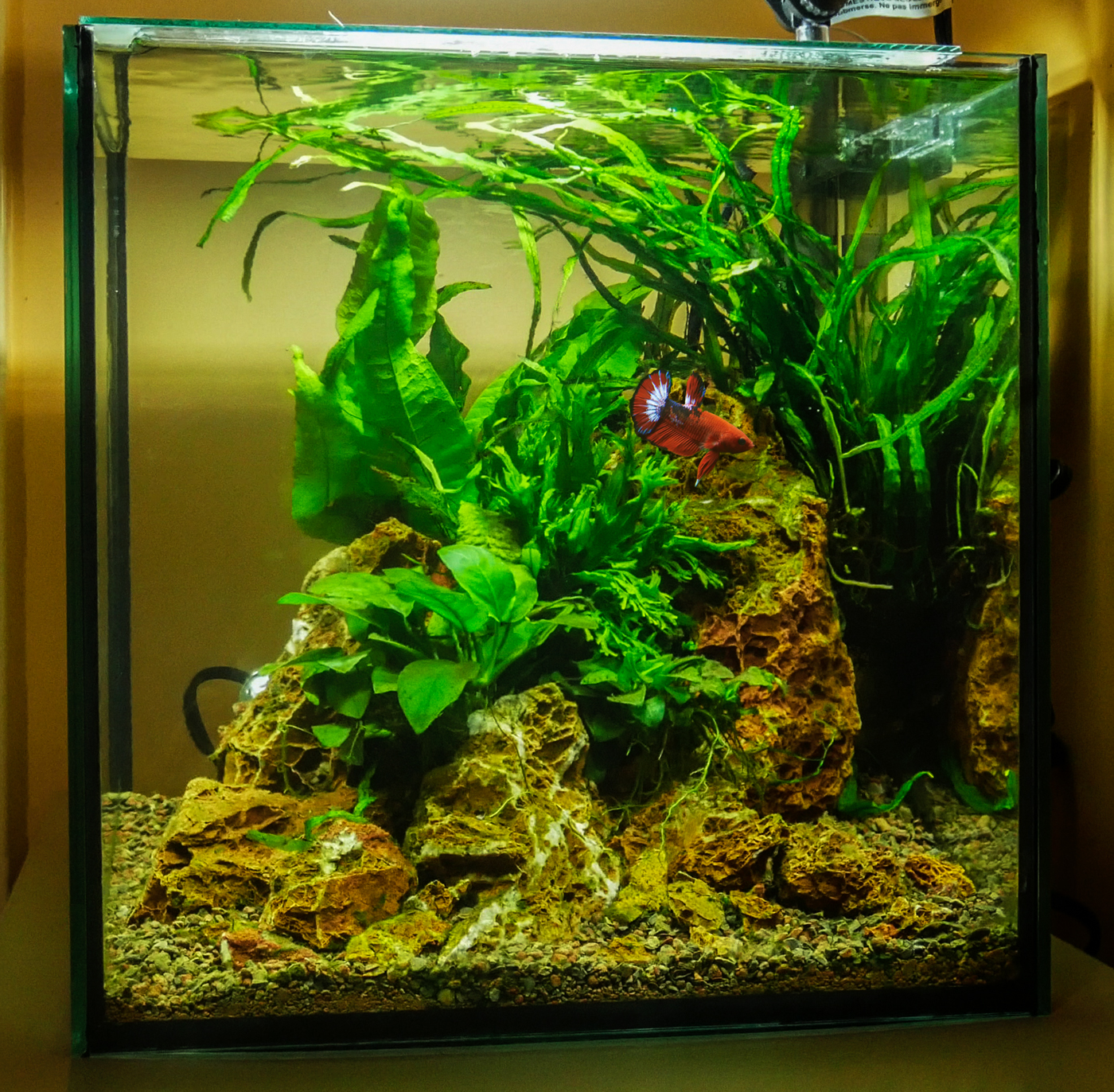

Photo credit sunkengardens.net
Plant Cover and Tank Environment
Filling your tank with a variety of plants that reach up to the water’s surface can significantly enhance the well-being of your Betta imbellis. Dense plant life mimics their natural habitat, offering security, improving water quality, and supporting a healthy bacterial and biological balance. For those keeping multiple bettas, plants become even more critical, providing females with places to hide and avoid potential conflicts.
When selecting plants, opt for species that thrive in low-light conditions, such as Java fern, Java moss, floating plants like frogbit, and Anubias. These plants do not require intense lighting to grow, making them ideal for a Betta imbellis setup.
Decorations and Substrate
Incorporating driftwood into your aquarium not only adds a touch of natural beauty but also provides your betta with additional hiding places. To replicate the dark, tannin-rich waters of their natural habitat, consider adding Catappa leaves to your tank. These leaves help to prevent diseases, lower the pH, and impart a natural tint to the water. A dark substrate is recommended to further enhance the vibrant colors of your Betta imbellis and to create a more secure environment for them.
Filtration and Tank Lid
The choice of filtration largely depends on personal preference; however, if you choose to use a filter, opt for a sponge filter or one with a low flow rate. Betta imbellis prefers calm waters and might become stressed in strong currents. While low-tech setups can be sufficient, a filter can be beneficial for plant health.
A secure lid is an absolute necessity for your tank. Bettas are known for their ability to jump, and a lid without any gaps is crucial to prevent any escape attempts. Ensuring your tank is well-covered will keep your fish safe and secure within their aquatic home.
Imbellis Betta Food
Betta imbellis strongly prefers meat-based foods, with mosquito larvae, bloodworms, and daphnia being among their favorites. These foods closely mimic their natural diet in the wild, providing them with essential nutrients for growth and health.
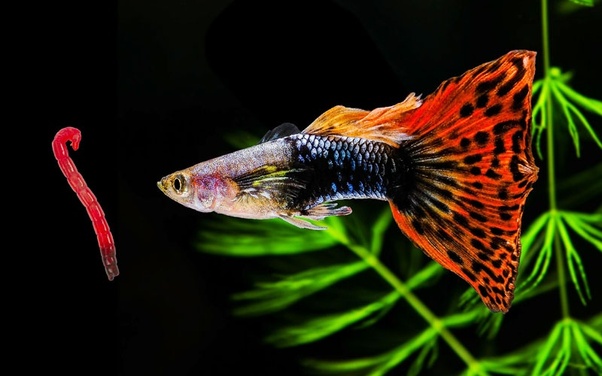

Unknown photographer
Varied Diet and Picky Eaters
It’s not uncommon for Betta imbellis to be selective with their food, particularly when it comes to dry pellets or flakes. To ensure they receive a balanced diet, it’s beneficial to offer a variety of foods. Experimenting with different types can help identify what your particular fish prefers.
The Role of Live Foods
Live foods are especially valuable when encouraging spawning or increasing the overall health and girth of your Betta imbellis. Hunting and consuming live prey can stimulate their natural instincts and often entice even the most reluctant eaters to feed. If your Betta imbellis is hesitant to eat, introducing live foods can trigger their instinctual feeding behaviors, leading to a more enthusiastic response at mealtime.
Water Parameters
For Betta imbellis to thrive in captivity, maintaining optimal water parameters is crucial. These parameters not only replicate their natural habitat but also ensure their health and longevity. Here’s a guide to the key water conditions required for Betta imbellis:
Temperature
Betta imbellis prefer warm water, with an ideal temperature range between 75-82°F (24-28°C). This range supports their metabolic processes and is conducive to their overall well-being. Using a reliable aquarium heater can help maintain a consistent temperature within this range.
pH Level
The water for Betta imbellis should be slightly acidic or neutral, pH range of 6.0 to 7.5. This mimics the acidic conditions of their natural habitats, such as peat swamps and rice paddies, where the water is softened by decaying plant matter. Regular testing and adjustments may be necessary to keep the pH within this optimal range.
Hardness
A general hardness (GH) of 5-15 dGH, is ideal for Betta imbellis. They are adapted to thrive in such conditions in the wild, and replicating this in the aquarium can contribute to their health.
Water Cleanliness
Maintaining clean water through regular partial water changes is essential for the health of Betta imbellis. It helps to remove toxins, such as ammonia and nitrites, which build up in the tank. A gentle filtration system can assist in keeping the water clean without creating strong currents that Betta imbellis dislike.
Tannins
Adding natural elements like Catappa leaves (Indian almond leaves) can introduce beneficial tannins into the water, which help to lower the pH naturally and create a more comfortable environment for Betta imbellis. Tannins also provide antimicrobial benefits and mimic the dark, tea-colored waters of their natural habitat.
Are Betta Imbellis Truly Peaceful?
While Betta imbellis are often called “peaceful bettas”, it’s important to understand that this refers to their potential for greater tolerance towards each other compared to selectively-bred Siamese fighting fish (Betta splendens). The Latin word “imbellis” even means “peaceful.”
Factors Affecting Aggression
Wild betta species, including Betta imbellis, can still exhibit aggression. Their smaller fins allow for faster swimming, making it easier for a male to chase a female. Tank size is crucial – a small tank will almost certainly lead to fights and potential injuries. On the other hand, a spacious, densely planted environment increases your chances of successful cohabitation.
Tips for a Peaceful Setup
- Tank Size: You’ll need a 15 gallon tank at minimum, with a preference for long, low tanks that mimic their natural habitat. A 20-gallon long could comfortably house a pair or even a small harem of three females.
- Plants & Hiding Places: Dense planting is a must! Include at least one plant every 20cm and incorporate hardscape materials like driftwood and rocks (avoid chalk stones due to pH effects). Catappa leaves provide excellent hiding spots for females.
- Careful Observation: Even in a well-designed tank, conflicts can arise. Be vigilant and prepared to separate your fish if necessary. Consider adding a sponge filter to produce gentle flow and disrupt bubble nesting, which can discourage breeding.
Breeding Betta Imbellis
Click here for my favorite guide on breeding & caring for fry
Breeding Betta imbellis shares similarities with domestic Betta splendens methods. With proper conditioning, it’s a relatively straightforward process.
Choosing Your Breeding Pair
- Purity Matters: Always breed Betta imbellis with another Betta imbellis. Avoid hybrids, which are becoming increasingly common. Hybridization threatens the availability of pure Betta imbellis.
- Finding Your Pair Look for two fish confirmed as Betta imbellis to ensure you’re contributing to the preservation of the species.
The Breeding Tank Setup
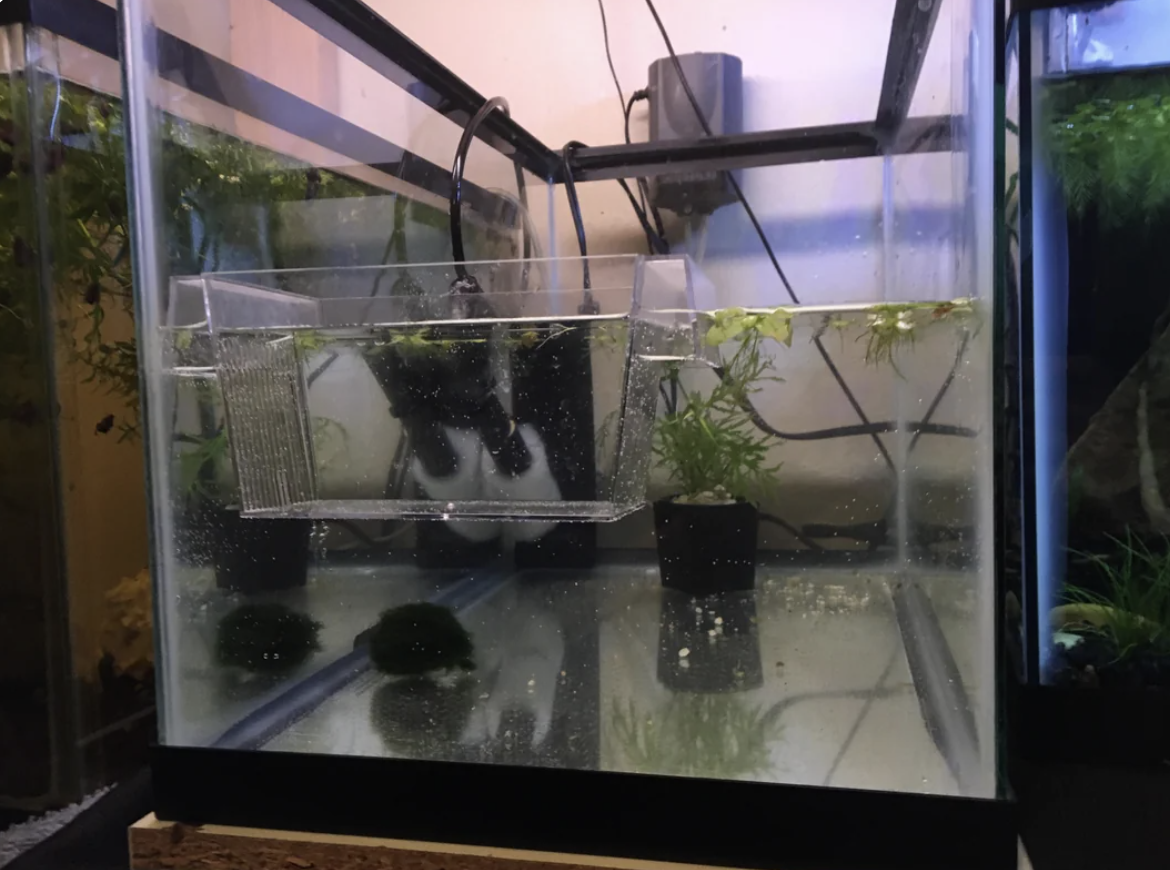

Reddit user: Aquascape
- Tank Size: A 7-12 gallon tank is suitable.
- Water Level: A low water level is ideal. This reduces stress on the female and makes it easier for the male to manage the bubble nest.
- Environment: Densely plant the tank and include Catappa leaves for hiding spots.
- Filtration: No filter is necessary. Cycle the tank for a week before introducing your male. He’ll start building his bubble nest.
Preparation is Key
- Conditioning: Feed both fish live foods for up to two weeks before breeding.
- Introducing the Pair: Place the female in a clear container within the breeding tank for visual introduction.
- Signs of Readiness: Look for strong vertical stripes, a swollen belly, and a visible egg spot on the female to indicate she’s ready to spawn.
Spawning and Beyond
- Release and Observe: Release the female into the tank, but monitor closely for excessive aggression. Spawning may take up to 3 days, and plentiful hiding places are crucial for the female’s safety.
- After Spawning: Remove the female immediately. Once fry are free-swimming, remove the male.
- Feeding the Fry: Feed newly hatched fry baby brine shrimp or small microorganisms.






